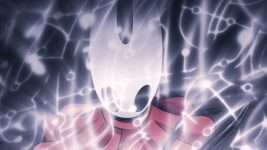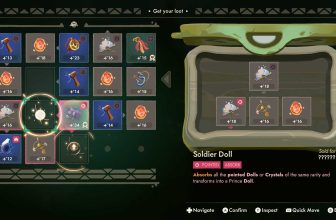When making Hollow Knight: Silksong, developer Team Cherry put more of an emphasis on letting players be flexible rather than strictly sticking to Metroidvania traditions.
Team Cherry leads Ari Gibson and William Pellen broke down their approach to Silksong’s design in an interview with ACMI, the Australian Centre for Moving Image museum, also published in the form of a paperback book on the ACMI store.
There, the duo talked about how traditional Metroidvania’s work, which essentially boils down to: explore an area, find a power up that lets you into the next area where you’ll then find another power up, and so on.
“It’s a specific kind of lock-and-key type of progression,” Gibson said, “but we try to submerge that element in favour of a more naturalistic world.” Silksong isn’t completely devoid of those genre anchors, though. “We definitely use it in some areas of the game, and it still plays out traditionally in the sense that you’re still exploring and gaining powers, but the world started naturally to open up a bit more than that.”
Pellen elaborated that the “player’s choice about where to go in Silksong is not dictated by what power-ups you currently have; there could be three or four valid directions.” It’s up to players which path they take. “You make your choice, and two of those directions might lead to a new ability – but the other two might lead to entirely new parts of the world, which might end up leading you to another power up.”
That design principal was also important to Silksong’s sometimes steep difficulty. If players hit a seemingly insurmountable wall – in the form of a brutal bug boss or a platforming section with spikes growing out of every wall – then they can always turn around and see what awaits down a different path, which is the advice Team Cherry gave when everyone was arguing over the sequel’s difficulty.
Team Cherry hopes “if there were ever” new Hollow Knight games after Silksong, they could “just exist alongside one another” so the order you play them doesn’t matter








